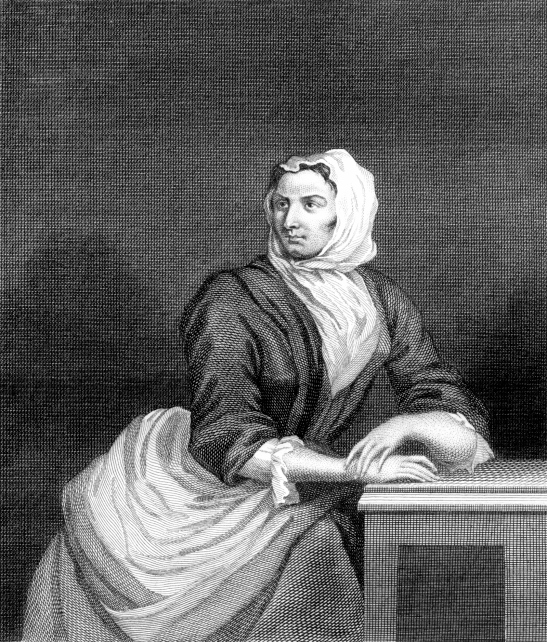Sarah Malcolm, laundress turned murderess
Sarah Malcolm was hanged on 7 March 1733 on a gallows placed between Mitre Court and Fetter Lane in Fleet Street, London.
The crime of multiple murder being rare, and the accused being a young  woman, the trial gained much attention from the public, with the execution attracting
a vast crowd.
woman, the trial gained much attention from the public, with the execution attracting
a vast crowd.
Malcolm was just 22 when she was found guilty of the killing of three people, ‘most barbarously murdered’ (Gazette issue 7175): her former employer, the wealthy widower Lydia Duncomb, by strangulation; servant, Elizabeth Harrison, also by strangulation; and Ann Price, servant, aged 17,‘wilfully and maliciously giving her with a Knife one mortal Wound on the Throat’.
Born in County Durham in 1710 to an Anglo-Irish family, Malcolm moved with her parents to Dublin before moving to London, where she went into domestic service. It was when her father returned to Dublin due to money troubles, and her mother died, that Malcolm first encountered the criminal underworld. She was employed as laundress to residents above the Inns of the Court, near Temple Bar, and came to know Mary Tracey and the brothers James and Thomas Alexander.
The night of the murders
On 4 February, Malcolm is said to have helped the Alexanders and Tracey to enter Lydia Duncomb’s Fleet Street lodging. Malcolm claimed to have acted only as lookout, waiting on the stairs until the three others left with their plunder of silver and other valuable belongings, including, as was later detailed in Old Bailey proceedings: ‘20 Moidores [gold coins], 18 Guineas, one Broad-Piece [gold coin], value 25 s. 4 Broad-Pieces, val. 23 s. each, one half Broad-Piece, value 11 s. 6 d. 25 s. in Silver, a Silver Tankard, Value 40 s. a Canvas Bag, Value 1 d. and two Smocks, Value 12 s.’
The next day, the three bodies were discovered and the horrific crime made public.
On searching Malcolm’s room, belongings of her employer were found, which aroused suspicion about her character. Further searches revealed a blood-stained silver tankard and bloodied linen. She was sent to a local small lock-up (compter) and then to Newgate Prison, where she later attempted to bribe the turnkey with coins that she’d hidden in her hair. He did not yield, and her fate was all but sealed.
The trial
The Gazette featured a call for witnesses to the act, including a royal pardon and £100 reward for those who could bring information to light:
‘Whereas on the 4th Day of February last, Three Women were most barbarously murdered in a Chamber in the Inner Temple, and Sarah Malcomb stands convicted for the Murder of one of the said Women; and whereas there is great reason to suspect that others were concerned in the Murders aforesaid His Majesty for the better discovering and bringing to Justice the Person or Persons concerned in so barbarous and heinous a Crime, is pleased to promise his most gracious Pardon to any one or more of them (except the said Sarah Malcolm) who shall discover his, her or their Accomplice or Accomplices, so as he, she or they may be apprehended and convicted thereof.
'And as a further Encouragement the Two Societies of the Temple do hereby promise, that in case any Person or Persons shall discover any other (besides the said Sarah Malcolm) concerned in the said Murders, or any of them, so as he, she or they shall be convicted thereof, the Person or Persons making such Discovery, shall receive as a Reward for each Person so convicted the Sum of One Hundred Pounds, to be paid by the Under Treasurers of the said Societies.’
Malcolm’s defence at the trial, on 23 February 1733, was that she knew nothing of the murders and was merely the lookout on the stairs, and that Martha Tracey and the Alexander brothers carried out the robbery. So though she admitted to being an accessory to the robbery (which, at the time, was punishable by death), her claim was that the blood was her own, and not that of the three women.
Throughout, Malcolm’s account of the murders was neither deemed credible nor consistent. She was found guilty of murder and sentenced to death by hanging, the jury taking only 15 minutes to agree the verdict. Martha Tracey and the Alexander brothers were not charged, due lack of evidence.
William Hogarth, artist, visited Malcolm in Newgate Prison two or three days before her execution to sketch her portrait, which would later become an engraving (pictured) and painting. This was likely to exploit her notoriety for his own gain, as part of his depictions of social disorder, crime, cruelty and punishment, though it was common practice for artists at the time.
The execution
On 7 March 1733, Malcolm was taken in a horse-drawn cart to the gallows accompanied by hangman, John Hooper, ‘at a place nigh where her heinous crimes were committed’, as was customary. She was dragged off the cart by the rope and left kicking in the air. At length she was cut down and taken by coach back to Newgate, and buried in the churchyard of St Sepulchre's.
Over a century was to pass until the Capital Punishment Amendment Act 1868 (Gazette issue 23386) ruled that hangings must be carried out in prisons, rather than in public. Capital punishment for murder was abolished in Britain in 1965, under the Murder (Abolition of Death Penalty) Act 1965 (Gazette issue 43813).
Sources:
Old Bailey Proceedings Online (www.oldbaileyonline.org, version 7.2, 27 October 2015), February 1733, trial of Sarah Malcolm, alias Mallcombe (t17330221-52)
